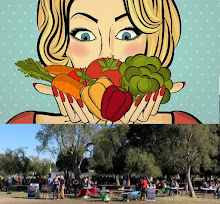COMMENTS
Edited by Wisdom Quarterly
(@Michael-qi7in)
This man is brilliant. I never in my life expected this much in a video of less than half an hour in length. Alan Watts, to my amazement, explains in one video everything I've come to personally understand about Buddhism (a term I don't even like) which to me is a philosophy [not a religion].
The Buddha was one of the greatest philosophers -- and for this he's not credited, not, I think, understood....
Whereas a lot of others, many Buddhists included, may see this video as just another Westerner trying to explain Eastern Philosophy and failing to do so, no, this is wrong. He gets to the heart of Buddhist philosophy, far beyond many long practicing Buddhists, at least as I understand reading the Heart Sutra, the Tripitaka [Three Collections of Buddhist texts], and the other Mahayana Sutras.
He doesn't mention bodhisattvas in a video on Mahayana Buddhism until 25 minutes in. Up until then, and to my disappointment, he had explained in an absolutely brilliant way the Buddhist concept of anatta or anātman, "non-self," anicca, anitya, or "impermanence," and he made reference to dukkha ("unsatifactoriness"), commonly translated as suffering or unease. These three things are the Three Universal Marks of All Existence in Buddhism, called the tilakkhana, trilakshana.
Around my neck I wear a cheap vajra pendant, and my impulse to buy this had less to do with Buddhism, I admit, but more to do with my own personal "spirituality" and understanding of existence and phenomena at the time.
I was fascinated with the sphere [enso] at the center, which is said to represent -- Mr. Watts said it at the very end -- it's commonly translated as "nothingness, voidness, emptiness" or as I've heard from certain speakers and readers, "zero," that of emptiness/śūnyatā which, in my understanding, is a representation of all Three Marks of Existence in Buddhism, the trilakshana represented in śūnyatā.
To say I'm satisfied having discovered this video does what words often do, fail. It's an injustice. I'm so satisfied that I wish I found it a long, long time ago. It's brilliant!
To quote the Heart Sutra, invoking the concept of śūnyatā and the trilakshana as I understand them, I encourage everyone to go read the whole Heart Sutra.
It's less than a five-minute read [when you don't count the 100,000 lines of the Prajnaparamita leading up to what everyone thinks is the Heart Sutra, which is just the closing summary and climactic conclusion that includes the famous mantra gate gate paragate parasamgate bodhi swaha or "Gone, gone, gone beyond, gone altogether beyond, oh what an awakening, so it is"] as recited by the Triratna Buddhist Community:
"Here then,
form is no other than emptiness,
emptiness no other than form.
Form is only emptiness,
Emptiness only form."
- [This could be interpreted to mean, "Within this Dharma (Doctrine), materiality (the Four Elements and their derivatives collectively) is impersonal (empty, not a self nor the property of a self, selfless), and the impersonal is none other than form. Form is impersonal just as the impersonal is form." The same is then said, of course, of the other four heaps or aggregates clung to as self/soul/I/me/mine. - Dhr. Seven, Wisdom Quarterly]



















































































































































































































































No comments:
Post a Comment